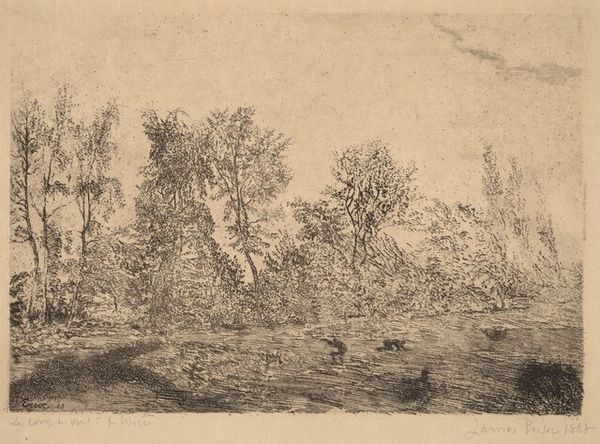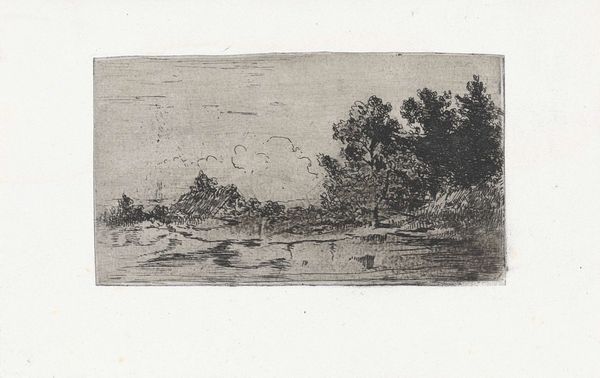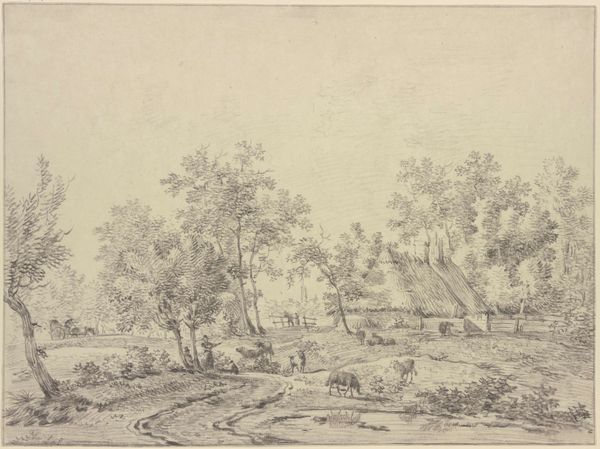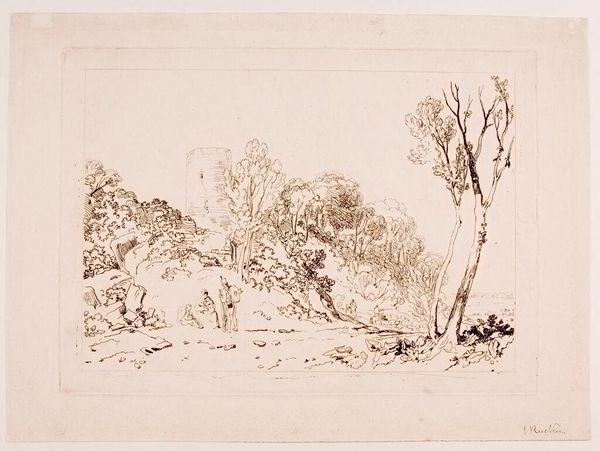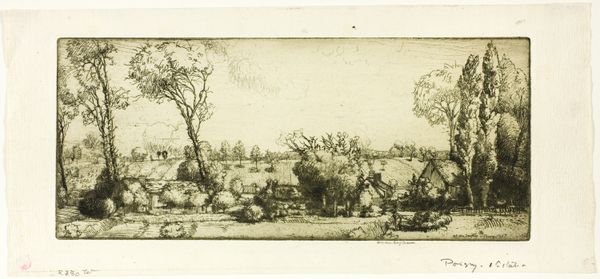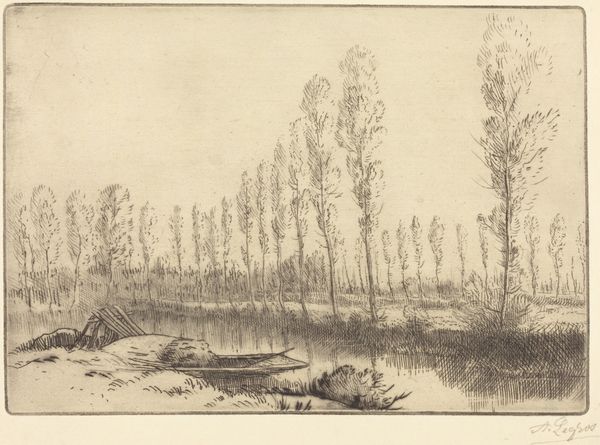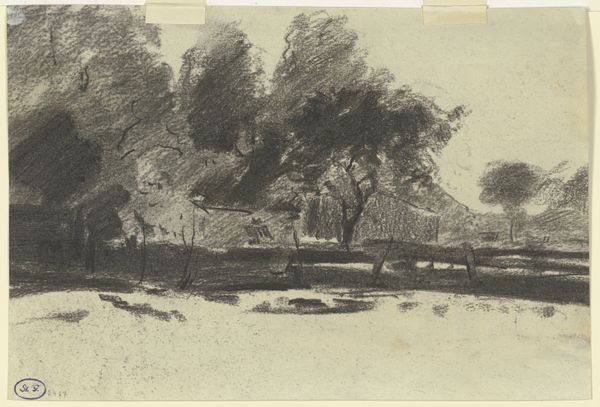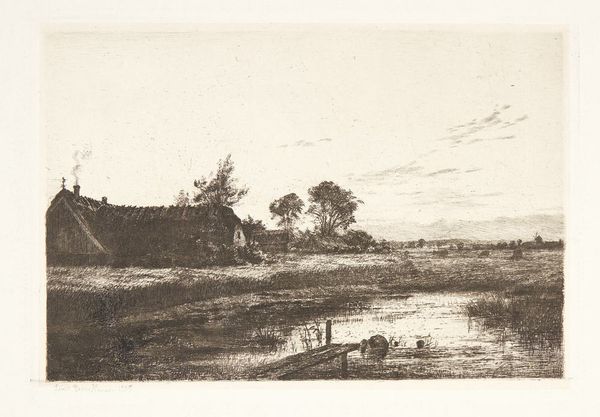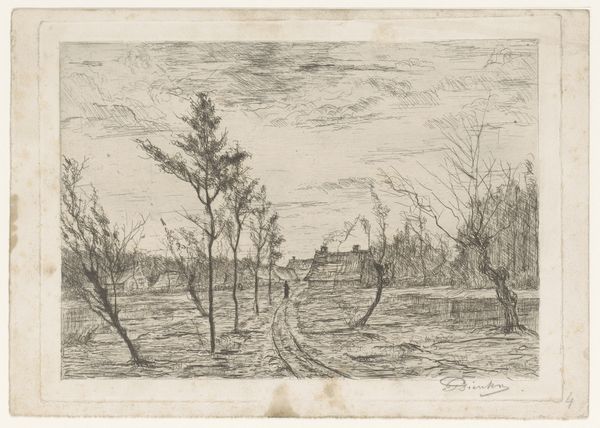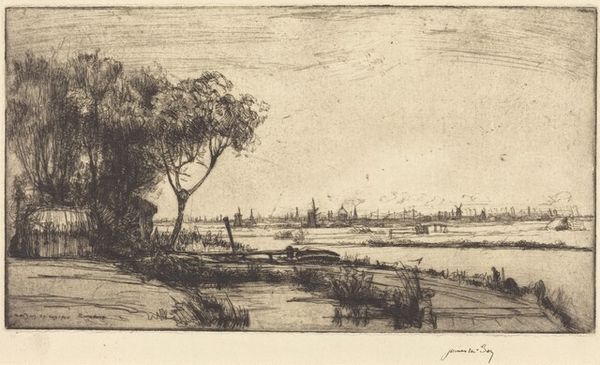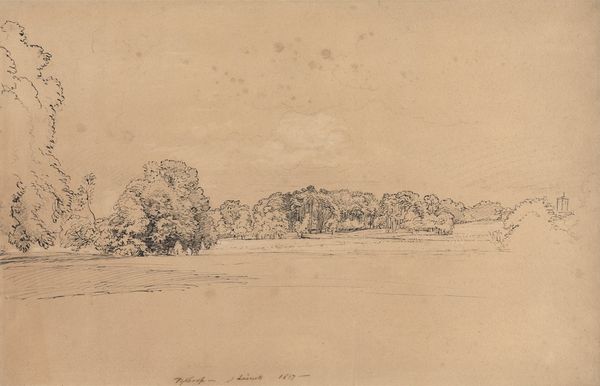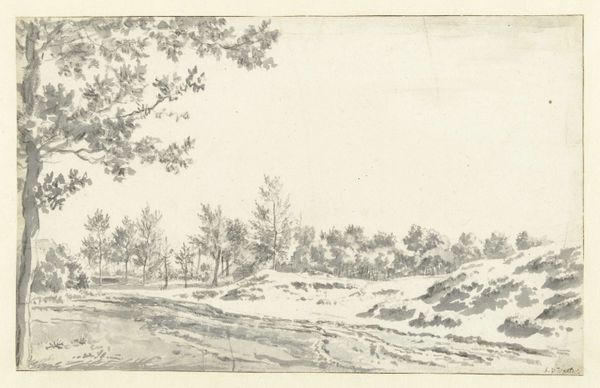
Copyright: National Gallery of Art: CC0 1.0
Editor: This is David Young Cameron's "The Lea, above Ware," an etching from 1902. It's a pretty serene landscape. The tones are muted, almost sepia-like, and it makes me think of a quiet, overcast day. What strikes you most about this piece? Curator: What strikes me? It's more like whispers, not strikes, doesn’t it? This is a visual poem, a fragile meditation on light and water. Notice how Cameron isn't just showing us the Lea, he's inviting us to feel the stillness. It almost feels like a memory, fading gently at the edges. Does it remind you of anything? Perhaps a half-remembered dream? Editor: It does have a dreamy quality. The way the trees are rendered, so wispy and almost ghost-like. But, how much of that is intentional, and how much is simply a result of the etching process? Curator: Ah, but isn't that where the magic lies? The happy accident! The artist's intention dancing with the unpredictable nature of the medium. I think Cameron embraced the process, letting the etching itself contribute to that sense of transience. It's as if the scene is constantly dissolving and reforming, just like a memory. Editor: That's a lovely way to put it. I was so focused on technique that I missed the poetry in the imperfection. Curator: It's easy to get lost in the technicalities, isn't it? But true art, I think, always invites us beyond the surface, beyond the skill, into a shared space of feeling. Don't you agree? Editor: Absolutely. I’ll definitely be paying more attention to those whispers next time.
Comments
No comments
Be the first to comment and join the conversation on the ultimate creative platform.
